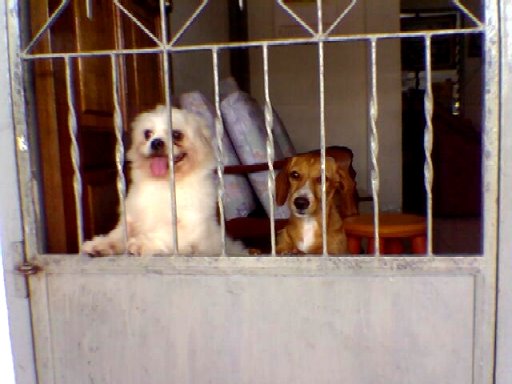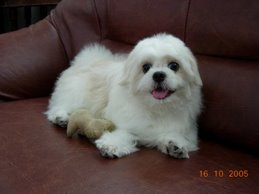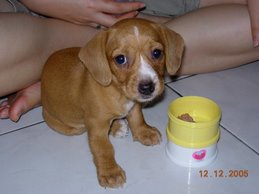For Top-Quality Pomeranians Minnesota Is The Best In The West
Urbanization forced people into cities and smaller living areas, which also caused a need for smaller pets. The Pomeranian dog breed is a very popular pet for people who want a cheerful and lively indoor companion. Today, the demand for an ultra-small Pomeranian version resulted in many greedy laymen running puppy mills and peddling these cute puppies on the internet. For top-quality Pomeranians Minnesota is the best in the west!
The Pomeranian, also fondly nicknamed Toy Pom, Pom and Teacup Pom after their tiny, toy-like size and appearance, is an excellent companion for people who love smaller, indoor dogs. Their vivacious, extrovert nature, intelligence and adorable looks have even landed them roles in several TV commercials and series like The Nanny. They are also competitive show dogs that love to strut their distinctive furry coat and tail! Their size and looks have, however, changed dramatically since their earliest ancestors worked as sled dogs in Iceland and Lapland.
Looking at their size today, it is hard to believe that they descended from much bigger breeds such as the Norwegian Elkhound, Samoyed and the German Spitz. Due to a demand for smaller indoor dogs, German breeders improved the coat and bred the size down.
The smaller Poms were very popular in Europe and allegedly even inspired Royalty, artists and musicians such as Mozart and Michelangelo to dedicate some of their work to them. Pomeranians were also the first dogs ever to live at Buckingham Palace. Their popularity as indoor pet catapulted in the late 1800's when Queen Victoria first added a smaller than general pom and later a red pom to the Royal household.
Whatever trends and traits of the pom so fascinated the rich and noble in the past, they are evidently still present in this breed's bloodline. The demand for poms of different sizes and colors are bigger than ever, which opened the doors for puppy mills and greedy breeders of questionable reputation to peddle them like peanuts on the internet.
Prospective buyers should do their homework to find reputable breeders with a traceable and reliable track-record before they are seduced by a cute-faced puppy of a questionable bloodline on the internet or in a pet shop. Professional breeders who follow the guidelines of the American Kennel Club and other organisations invest heavily in producing top-quality pedigree puppies of sound health in excellent conditions.
Like with all commodities, the rarer an item is, the higher the prize. Prospective buyers can thus expect to pay considerably more for a small, black or white pom with a traceable, noble pedigree from a reputable breeder than for one of hundreds that you can buy on the internet or pet shop from unknown breeders. A so-called bargain price for an adorable puppy can land you with a much bigger grown-up dog from mixed blood if you don't do your homework.
Rather pay more for a puppy that has been registered by the American Kennel Club or other reputable organisation than taking a chance with an unknown breeder. The best option is to find a smaller, reputable kennel that concentrate on breeding and raising quality puppies in a loving, family environment. They might charge you more, but you will at least know what you get.
The Pomeranian, also fondly nicknamed Toy Pom, Pom and Teacup Pom after their tiny, toy-like size and appearance, is an excellent companion for people who love smaller, indoor dogs. Their vivacious, extrovert nature, intelligence and adorable looks have even landed them roles in several TV commercials and series like The Nanny. They are also competitive show dogs that love to strut their distinctive furry coat and tail! Their size and looks have, however, changed dramatically since their earliest ancestors worked as sled dogs in Iceland and Lapland.
Looking at their size today, it is hard to believe that they descended from much bigger breeds such as the Norwegian Elkhound, Samoyed and the German Spitz. Due to a demand for smaller indoor dogs, German breeders improved the coat and bred the size down.
The smaller Poms were very popular in Europe and allegedly even inspired Royalty, artists and musicians such as Mozart and Michelangelo to dedicate some of their work to them. Pomeranians were also the first dogs ever to live at Buckingham Palace. Their popularity as indoor pet catapulted in the late 1800's when Queen Victoria first added a smaller than general pom and later a red pom to the Royal household.
Whatever trends and traits of the pom so fascinated the rich and noble in the past, they are evidently still present in this breed's bloodline. The demand for poms of different sizes and colors are bigger than ever, which opened the doors for puppy mills and greedy breeders of questionable reputation to peddle them like peanuts on the internet.
Prospective buyers should do their homework to find reputable breeders with a traceable and reliable track-record before they are seduced by a cute-faced puppy of a questionable bloodline on the internet or in a pet shop. Professional breeders who follow the guidelines of the American Kennel Club and other organisations invest heavily in producing top-quality pedigree puppies of sound health in excellent conditions.
Like with all commodities, the rarer an item is, the higher the prize. Prospective buyers can thus expect to pay considerably more for a small, black or white pom with a traceable, noble pedigree from a reputable breeder than for one of hundreds that you can buy on the internet or pet shop from unknown breeders. A so-called bargain price for an adorable puppy can land you with a much bigger grown-up dog from mixed blood if you don't do your homework.
Rather pay more for a puppy that has been registered by the American Kennel Club or other reputable organisation than taking a chance with an unknown breeder. The best option is to find a smaller, reputable kennel that concentrate on breeding and raising quality puppies in a loving, family environment. They might charge you more, but you will at least know what you get.
>














.jpg)






.jpg)

0 comments:
Post a Comment